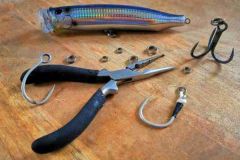1) Install the screw
Screw the screw into the lure head. Instead of a screw, you can use a lead head with a stinger attachment on the underside.
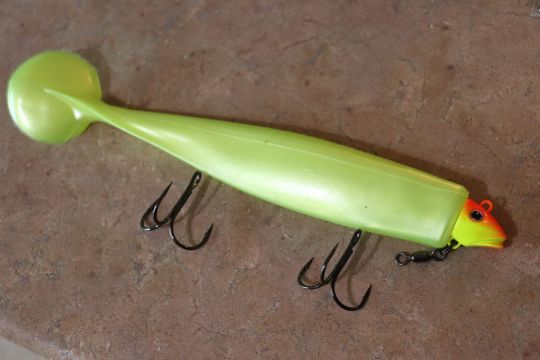
In this configuration, it's important to bear in mind that regulations allow fishing with only two hooks, so only one hook can be set on the underside of the lure.
Once the screw has been installed, you need to position the hooks where you want them, to see how you will proceed afterwards.
When using two trebles, the first hook should reach the first quarter of the lure, and the second the third quarter.
If you choose to use a single hook, place it halfway along the lure.
2) Set the first hook
To attach the first hook, attach a first broken ring to the screw. A swivel is then attached to this ring, followed by another broken ring. This last ring is used to attach a hook and a holding pin.
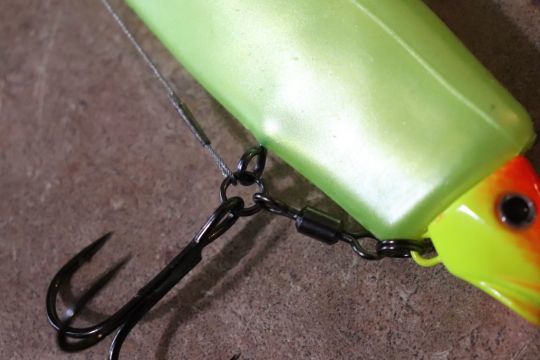
This assembly often makes it possible to reach the first quarter of the lure, without having to resort to steel wire for this portion.
If this is not the case, then making a stinger from steel wire is inevitable. On one side, it consists of a broken ring and a rolling swivel. On the other side, a broken ring is fitted, into which the desired hook and holding pin are attached. In fact, this stinger acts as a link between the swivel and the broken ring that holds the hook.
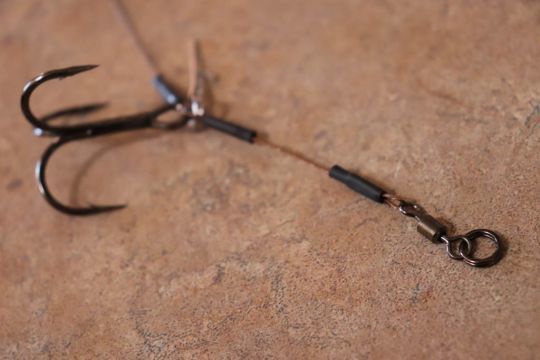
In both cases, you need to make sure the treble hook is positioned in the right direction, i.e. with the shank pointing outwards when it's pressed towards the rear of the lure.
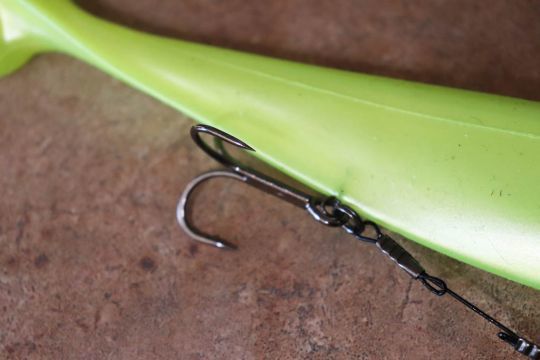
3) Adding a second hook
To add a second hook, simply make a stinger and connect it to the broken ring of the first hook. On its other end, this stinger simply consists of a broken ring with a triple and a pin. Its length should allow the hook to be positioned 3/4 of the way up the lure.
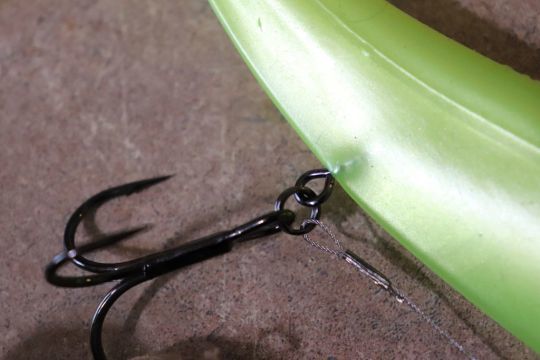
Another alternative is to make this stinger longer, to connect it to the screw head. When choosing between the two, I prefer and recommend the in-line version, which keeps the hook away from the fish when it's not hooked.

And there you have it! Making a shallow assembly can be done very quickly, and it can last a long time before you have to do it again.










